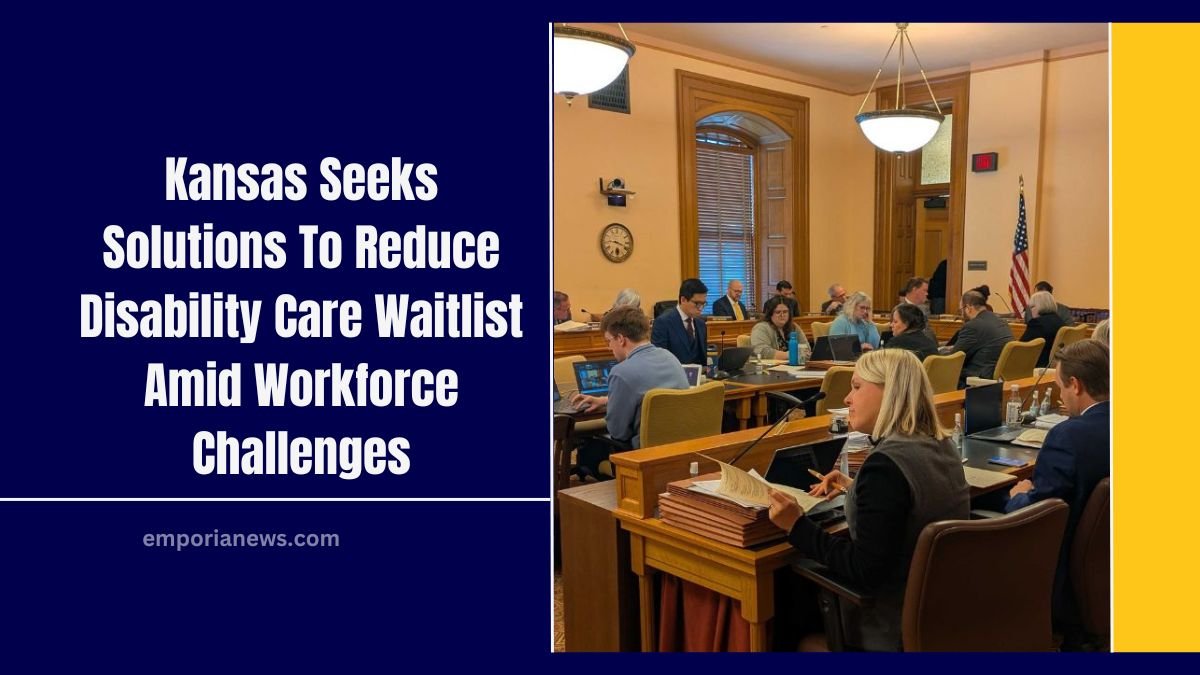In Kansas, over 4,000 individuals with intellectual and developmental disabilities (I/DD) are on a waitlist for essential Home and Community-Based Services (HCBS).
This prolonged delay, often extending up to nine years, has prompted state lawmakers and advocacy groups to explore strategies to expedite access to these critical services.
High Turnover Among Direct Support Professionals
A significant barrier to reducing the waitlist is the high turnover rate among Direct Support Professionals (DSPs), who provide indispensable assistance to individuals with I/DD.
Turnover rates for DSPs can reach up to 50%, leading to instability for those relying on consistent care. Holly Oleson, a lead DSP at Honey Bee Community Services in the Kansas City area, shared a poignant example with state lawmakers:
“Within three months, his world was flipped upside down when all three of his preferred staff left,” Oleson recounted, highlighting the emotional toll on clients when trusted caregivers depart.
Legislative Efforts and Funding Allocations
In response to the growing waitlist, Kansas lawmakers have considered allocating funds to remove individuals from the backlog.
Initially, there was a proposal to fund services for 500 individuals; however, concerns about the capacity of the current workforce led to a reduction of this number to 320 slots. Rep. Troy Waymaster, chair of the House Appropriations Committee, expressed reservations:
“I would love nothing more than to put more money towards the waiting list and get individuals off the waiting list. [But] I know that the capacity is not there.”
Despite these concerns, advocates like Rocky Nichols, executive director of the Disability Rights Center of Kansas, argue that the state possesses the necessary workforce to support an additional 500 individuals.
Nichols points to previous legislative actions where funding led to significant reductions in the waitlist, suggesting that with adequate resources, further progress is attainable.
Proposed Strategies to Eliminate the Waitlist
Advocacy groups have outlined a comprehensive three-pronged strategy aimed at eliminating the waitlist within four years:
- Reducing the Waitlist by 500 Slots Annually: This approach emphasizes the need for consistent funding to systematically decrease the number of individuals awaiting services.
- Implementing the Community Support Waiver: Designed as an alternative to the traditional HCBS waiver, this program offers tailored services to individuals with less intensive needs, thereby providing an “exit ramp” for those on the waitlist.
- Engaging with Waitlisted Individuals: Proactively communicating with those on the waitlist to assess their specific needs ensures that resources are allocated effectively and that individuals receive appropriate services promptly.
Addressing Workforce Challenges
To tackle the DSP shortage, the Kansas C.A.R.E.S. Act has been introduced. This legislation aims to enhance the desirability of DSP positions by:
- Developing Career Education Programs: Collaborating with community colleges to offer specialized training for DSPs.
- Expanding Health Coverage: Extending state health benefits to DSPs in non-governmental roles to improve job attractiveness.
- Creating an Online Resource System: Establishing a digital platform to assist families with inquiries about the waitlist and available services.
These initiatives aim to reduce turnover and attract new professionals to the field, thereby enhancing the stability and quality of care for individuals with I/DD.
Budgetary Considerations
While there is a strong push to address the waitlist and workforce issues, Kansas faces a projected $480 million shortfall in funding expenses for 2026.
This financial constraint necessitates a balanced approach, prioritizing essential services while maintaining fiscal responsibility. Rep. Will Carpenter, an advocate for reducing the waitlist, acknowledges the challenges but emphasizes the importance of supporting families in need:
“In times of need, we’re kind of looking at things to be a little more conservative on.”
Kansas is at a critical juncture in addressing the extensive waitlist for disability care services. By implementing strategic funding, legislative reforms, and workforce development initiatives, the state aims to provide timely and effective support to individuals with intellectual and developmental disabilities.
Collaboration among lawmakers, advocacy groups, and community service providers will be essential in transforming these plans into actionable solutions, ensuring that all Kansans receive the care and support they deserve.




